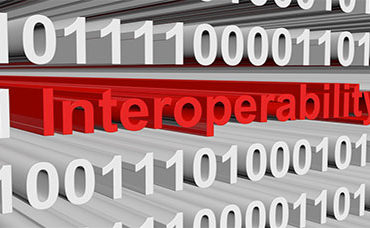Wanted: IoT Interoperability, Security Specs

via Shutterstock
Yet another survey, this one by an Internet of Things standards group, emphasizes the need for interoperability and security standards as more devices are connected. Moreover, the survey of consumers by the Open Connectivity Foundation (OCF) uncovered growing demand for interoperable devices and communications along with security certification in the wake of several high-profile hacks involving IoT networks.
OCF said it polled 250 attendees during last month's Consumer Electronics Show and released its finding on IoT attitudes on Wednesday (Feb. 22). "These survey results are a clear indicator that the issue of interoperability has come to the forefront of consumer concerns when it comes to IoT," OCF executive director Joonho Park noted in a statement. "With a unifying standard in place, which provides a consistent standard of security, privacy and device definitions, we can defragment the market…."
Other studies by standards bodies and network equipment vendors have reached similar conclusions about IoT security. An infrastructure vulnerability survey released last month by Arbor Networks concluded that botnets and other malware are exploiting inherent security weaknesses in IoT devices. The security report also warned that the release of botnet source code has greatly expanded the ability of hackers to launch distributed denial-of-service attacks.
Indeed, IoT interoperability and security were among the top concerns of consumers in the wake of last year's botnet attack on IoT devices and networks. Hence, the OCF survey found that 60 percent of consumers would be more likely to purchase connected devices with standard security ratings or certification.
As things currently stand, "IoT vendors are faced with multiple, competing de facto standards and protocols from which they must choose, causing fragmentation in the marketplace that often hampers the ability of devices from multiple manufacturers to interoperate," according to the OCF survey. Hence, 73 percent of respondents said industry standards for IoT are critical to technology innovation.
Experts note that the current lack of IoT interoperability has a cascade effect within the networks that would support connected devices. For example, when new devices or sensors are added to a wireless network, they explain, interfaces to other network devices must be customized to accommodate the new network node. Interoperability proponents argue that upfront open standards would go a long way toward solving these problems.
One possible approach to network interoperability involves the use of "a lightweight, low-power layered network protocol, similar to IP, for granular data transmission and overlay protocols for control signals on it," MIT researcher Stephen Miles noted in a recent blog post on tackling IoT interoperability issues.
Meanwhile, emphasizing earlier efforts by the open-source movement to establish upfront industry specs, the OCF report concluded: "A collaborative, standards-based approach is the way forward for this industry, to ensure that the next wave of connected home and automotive devices fully meet consumers’ needs."
Related
George Leopold has written about science and technology for more than 30 years, focusing on electronics and aerospace technology. He previously served as executive editor of Electronic Engineering Times. Leopold is the author of "Calculated Risk: The Supersonic Life and Times of Gus Grissom" (Purdue University Press, 2016).










